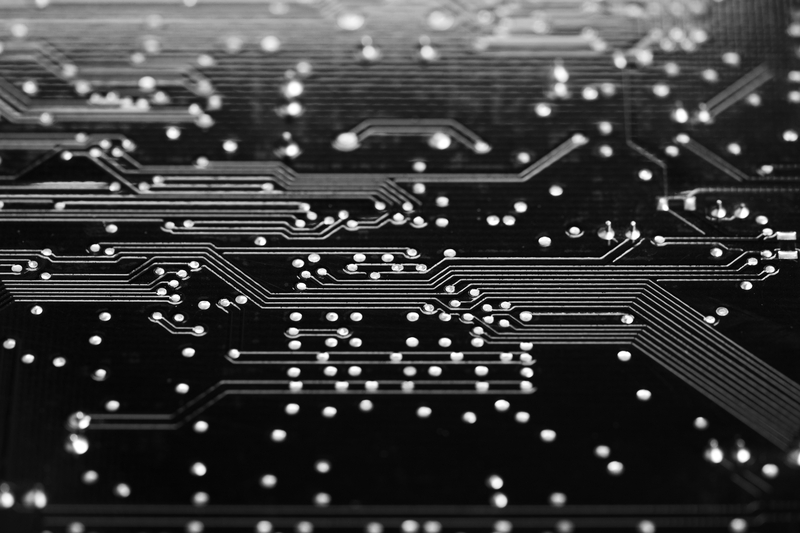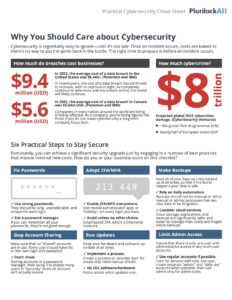Deep Dive into Attack Surface in Cybersecurity: Understanding, Significance, and Analysis
In the ever-evolving landscape of cybersecurity, understanding and managing the attack surface is of paramount importance. As organizations rely more heavily on digital infrastructure and interconnected systems, their attack surface, the sum of all potential points of vulnerability, expands and becomes increasingly complex. This deep dive explores what the attack surface is, why it matters, and offers in-depth analysis of its importance in modern cybersecurity.
What is the Attack Surface?
The attack surface is the digital representation of all the potential points of entry or vulnerability in an organization’s information technology (IT) infrastructure. It encompasses all the avenues through which malicious actors, such as hackers, can attempt to gain unauthorized access, compromise data, or disrupt operations. These points of vulnerability can be physical, such as unsecured server rooms, or digital, like unpatched software vulnerabilities. In essence, the attack surface is the collection of all assets, interfaces, and configurations that could be exploited.
Components of the Attack Surface
- Network Perimeter: Traditionally, this referred to the boundary that separated an organization’s internal network from the outside world. However, in the era of cloud computing and remote work, the network perimeter has become more fluid, making it challenging to define and protect.
- Endpoints: These are the devices connected to the network, including servers, workstations, laptops, mobile devices, and IoT devices. Each endpoint can serve as a potential entry point for attackers.
- Applications and Services: The software applications and services an organization uses or develops contribute significantly to the attack surface. Vulnerabilities in these systems, like unpatched software or misconfigurations, can be exploited by attackers.
- Third-Party Integrations: As organizations increasingly rely on third-party vendors and services, the attack surface expands to include these external dependencies. A vulnerability in a vendor’s product or service can have a cascading impact on the organization.
- Human Elements: Employees and other individuals with access to the organization’s systems are part of the attack surface. Malicious insiders or social engineering attacks can exploit these human elements.
- Physical Infrastructure: The physical components of an organization’s IT infrastructure, such as data centers, can also be vulnerable. Physical security measures are essential to protect against threats like theft or tampering.
- Cloud Services: As cloud computing becomes more prevalent, cloud services and configurations become a significant part of the attack surface. Misconfigured cloud resources are a common vector for attacks.
Why Does the Attack Surface Matter?
Understanding the significance of the attack surface is crucial for effective cybersecurity practices and risk management. Several key reasons highlight why it matters:
1. Risk Assessment and Mitigation
An organization’s attack surface represents its potential exposure to cyber threats. By identifying and analyzing the components of the attack surface, organizations can assess their risk and prioritize security measures. This risk assessment helps allocate resources more effectively and focus on areas with the highest vulnerability.
2. Vulnerability Management
As the attack surface grows, so does the number of potential vulnerabilities. Managing these vulnerabilities is essential to reduce the likelihood of successful attacks. Regular vulnerability scanning, patch management, and security testing are crucial for keeping the attack surface as small and secure as possible.
3. Incident Response
In the unfortunate event of a security breach or cyberattack, understanding the attack surface can significantly impact incident response efforts. Knowing where the attack occurred, how it happened, and which assets were affected enables organizations to respond more swiftly and effectively, minimizing damage and downtime.
4. Compliance and Regulations
Many industries and jurisdictions have cybersecurity regulations and compliance standards that organizations must adhere to. Understanding and reducing the attack surface can help organizations meet these requirements and avoid potential legal and financial penalties.
5. Resource Allocation
Cybersecurity is not a one-size-fits-all endeavor. Organizations have limited resources, and they must allocate them strategically. Understanding the attack surface allows organizations to prioritize investments in security controls and technologies that address their specific vulnerabilities and risks.
6. Business Continuity
An extensive attack surface increases the risk of successful cyberattacks, which can disrupt business operations and lead to financial losses. By managing and reducing the attack surface, organizations enhance their resilience and ability to maintain business continuity in the face of cyber threats.
The Importance of Attack Surface Reduction
One of the key strategies in modern cybersecurity is attack surface reduction (ASR). ASR involves identifying, assessing, and minimizing the attack surface to decrease the organization’s exposure to threats. This approach has gained prominence for several reasons:
1. Complexity Reduction
As organizations grow and adopt new technologies, their attack surface naturally expands. Attack surface reduction aims to simplify this complexity by eliminating unnecessary components, consolidating services, and reducing the overall digital footprint. Simplification makes it easier to manage and secure the remaining assets effectively.
2. Vulnerability Minimization
Every component of the attack surface represents a potential vulnerability. By reducing the attack surface, organizations minimize the number of potential points of exploitation, making it more challenging for attackers to find and exploit weaknesses.
3. Enhanced Visibility
A smaller attack surface leads to better visibility into an organization’s IT environment. This improved visibility allows for more effective monitoring, threat detection, and incident response. It is easier to detect anomalies and intrusions when the environment is well-understood and streamlined.
4. Resource Optimization
Investing in cybersecurity measures for a smaller attack surface is more cost-effective than attempting to secure a vast and complex one. Resource optimization ensures that cybersecurity budgets are spent where they can have the most significant impact.
5. Improved Security Posture
Attack surface reduction is a proactive approach to cybersecurity that results in an improved security posture. By minimizing the attack surface, organizations reduce their exposure to risks and enhance their ability to defend against threats.
Strategies for Attack Surface Reduction
Achieving attack surface reduction requires a systematic approach that involves multiple strategies and best practices:
1. Asset Inventory
Start by creating a comprehensive inventory of all assets within the organization, including hardware, software, applications, and cloud services. Understanding what needs protection is the first step in reducing the attack surface.
2. Vulnerability Assessment
Regularly assess the organization’s vulnerabilities by conducting security scans, penetration testing, and vulnerability assessments. Prioritize vulnerabilities based on their severity and potential impact on the organization.
3. Patch Management
Implement a robust patch management process to ensure that all software and systems are kept up to date with the latest security patches and updates. Unpatched systems are a common target for attackers.
4. Configuration Management
Maintain strict control over system configurations to prevent misconfigurations that can introduce vulnerabilities. Follow security best practices and use automation tools to enforce configuration policies.
5. Access Control
Implement strong access controls, authentication, and authorization mechanisms to limit access to sensitive resources. Ensure that employees and users have the minimum necessary permissions to perform their duties.
6. Network Segmentation
Segment the network to isolate critical assets from less secure parts of the network. This limits lateral movement for attackers who may have gained access to one part of the network.
7. Security Awareness Training
Invest in employee security awareness training to educate staff about cybersecurity best practices, social engineering threats, and how to recognize and report suspicious activities.
8. Third-Party Risk Management
Evaluate the security practices of third-party vendors and service providers. Ensure that they meet the organization’s security standards and mitigate any risks associated with their products or services.
9. Incident Response Planning
Develop a robust incident response plan that outlines procedures for detecting, containing, and mitigating security incidents. Regularly test and update the plan to ensure its effectiveness.
10. Continuous Monitoring
Implement continuous monitoring tools and practices to detect and respond to threats in real-time. This allows for swift action to minimize the impact of security incidents.
Challenges and Considerations in Attack Surface Reduction
While attack surface reduction is a sound cybersecurity strategy, it is not without its challenges and considerations:
1. Balance with Business Objectives
Reducing the attack surface must be balanced with the organization’s business objectives. Overzealous reduction efforts could hinder innovation and growth. Striking the right balance is essential.
2. Legacy Systems
Many organizations have legacy systems that are difficult to secure and cannot be easily replaced. Managing the attack surface in such cases requires extra care and attention.
3. Employee Resistance
Employees may resist security measures that they perceive as burdensome or restrictive. Effective communication and training are essential to gain their cooperation.
4. Evolving Threat Landscape
The threat landscape is constantly evolving, and attackers are becoming more sophisticated. Attack surface reduction is an ongoing process that requires adapting to new threats and vulnerabilities.
5. Resource Constraints
Smaller organizations with limited resources may face challenges in implementing comprehensive attack surface reduction strategies. Prioritization and resource allocation are critical in such cases.
6. Supply Chain Risks
Third-party vendors and supply chain dependencies can introduce risks that are challenging to mitigate fully. Assessing and managing these risks is an ongoing effort.
Case Study: SolarWinds Cyberattack
The SolarWinds cyberattack, discovered in December 2020, serves as a sobering example of the importance of attack surface management. In this highly sophisticated supply chain attack, threat actors compromised the software update mechanism of SolarWinds, a widely used IT management software provider. This allowed them to inject a backdoor into the software, which was then distributed to thousands of SolarWinds customers, including numerous government agencies and major corporations.
The attack succeeded because SolarWinds had a vast attack surface, and the attackers found a weak point in the software supply chain. The incident highlighted the critical need for organizations to not only secure their own assets but also assess and manage the security of their third-party suppliers and dependencies. Attack surface reduction, in this case, could have included stricter controls on software supply chains and more rigorous third-party risk management.
Conclusion
In the world of cybersecurity, the concept of the attack surface serves as a fundamental pillar for understanding and managing risk. As organizations continue to rely on digital technology, their attack surfaces expand, creating more opportunities for cyber threats. Attack surface reduction, through a combination of strategies like vulnerability management, access control, and employee training, plays a pivotal role in mitigating these risks.
The SolarWinds cyberattack and other high-profile breaches serve as stark reminders of the consequences of neglecting attack surface management. Organizations that prioritize attack surface reduction not only enhance their cybersecurity posture but also increase their resilience against evolving cyber threats. In a landscape where the only constant is change, vigilance in monitoring and reducing the attack surface is paramount to staying one step ahead of adversaries in the ever-evolving digital battlefield.















